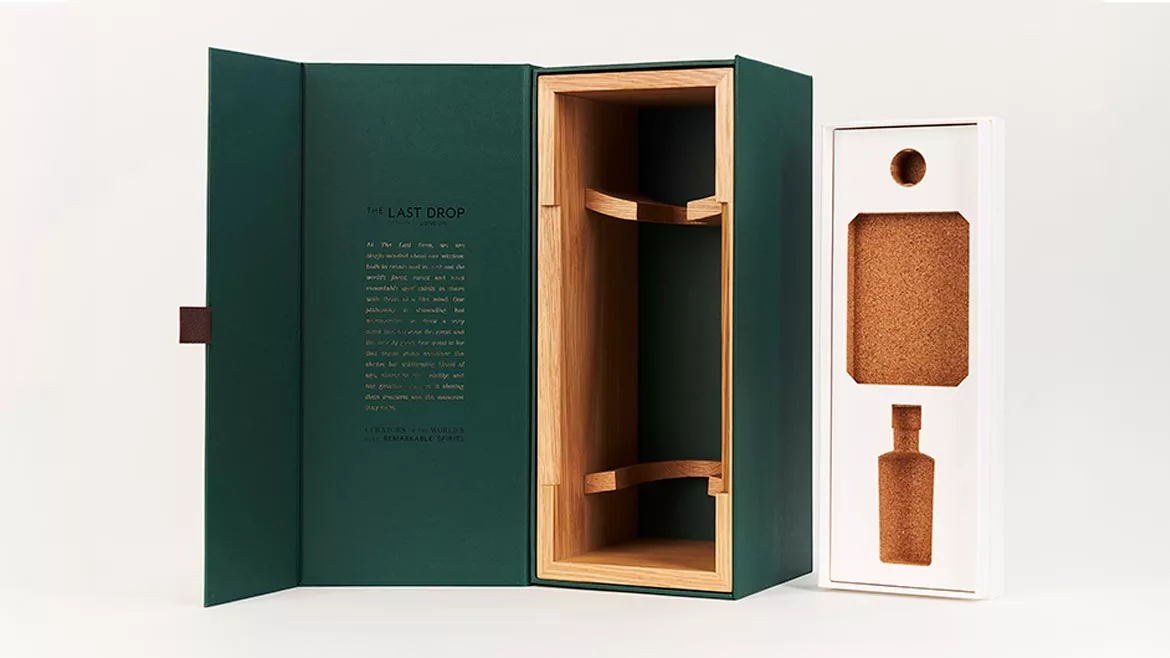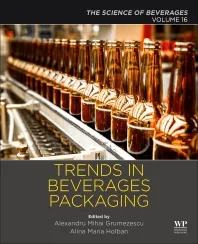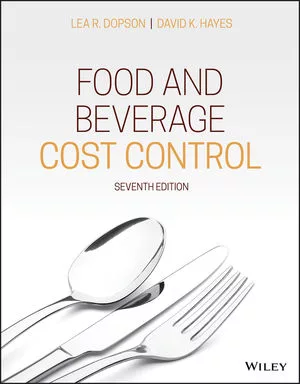Striving for sustainable secondary packaging
Beverage brands utilize secondary packaging to appeal to consumers

Image courtesy of IPL Packaging
Nowadays, it seems that sustainability efforts are influencing every facet of every market, from clothing to cars. The beverage industry is no exception to this impact, especially with secondary packaging.
Lindsay Bonner, head of U.S. operations and L.B. Odendaal, head of design, at IPL Packaging, Lakewood, Colo., describe how sustainability has affected secondary packaging trends.
“A combination of social awareness and government regulation has increased the demand on more environmentally friendly, and sustainable secondary packaging in more industries, the result has been that packaging design and supply has adapted to offer more responsible solutions across the value chain, from designing with sustainability in mind, to sourcing materials from vetted and certified suppliers,” they share.
Premium packaging has eliminated a lot of unnecessary embellishment in design and manufacturing, the experts note.
“The removal of, and replacement of non-sustainable materials with sustainable alternatives, the lightening and reduction in overall material use, looking at alternatives like pulp, bioplastics and paper wherever possible for better recycling and more thought into second use or longevity in packaging has become the norm,” Bonner and Odendaal say.
Scott Renfrew, director of sales operations at Accredo Packaging, Sugar Land, Texas, suggests that sustainability is reshaping the landscape of secondary packaging.
“What was once a differentiator is now seen as an expectation,” he says. “Beverage brands are prioritizing packaging that not only performs in cold-chain and distribution environments, but also aligns with aggressive sustainability goals.”
Renfrew shares that, at Accredo, they have observed rising demand for recycle-ready films, bio-based content and packaging that contains high levels of post-consumer recycled (PCR) content, especially in shrink films used for multipacks.
“Advancements in machine direction oriented (MDO) film technology — which is produced by stretching a polymer film to make it strong, firm and recyclable — has its advantages,” he notes. “It allows us to engineer stronger, thinner and more recyclable materials, which helps beverage brands reduce their environmental impact without sacrificing load containment or cold-chain curability. Sustainability is no longer a siloed initiative.”
Renfrew says, now sustainability is integrated across packaging strategy, manufacturing processes and on-pack brand communications to consumers.
However, sustainability is not the only trend affecting secondary packaging.
Paul Edwards, vice president of the digital division at INX International Ink Co., Schaumburg, Ill., notes that there is likely an impact related to the increase in short runs being seen in the beverage market, which is being driven by digital printing options.
“Craft brewers and other new beverage types are using digital printing at relatively low volumes to market their products, and the many new brands out there are taking advantage of the ability to digitally print cans, bottles and other container types,” Edward says. “The secondary packaging required for these low run length applications needs to be able to provide complimentary products. Therefore, there is an increase in demand for digitally printed secondary packaging to address the secular trend with respect to lower run lengths.”
IPL’s Bonner and Odendaal share that, while sustainability is “a big driving force,” other trends including interest in security and inclusion of technology has become more prevalent, as well as price and a steady rise in eCommerce, which has created a need for more impactful dual-purpose packaging. As such, this also creates a need for packaging that is able to protect in shipping and offer an attractive opening experience, they add.
“Customers are more aware of price and the impact on price and availability that the location of production has, brands are looking to source closer to home and global political uncertainty has impacted brands’ long-term commitment,” Bonner and Odendaal note.
Meanwhile, Accredo’s Renfrew states that today’s consumers care deeply about how products are made, not just what is inside.
“They expect packaging to reflect a brand’s values, from sustainability and social responsibility to transparency and community impact,” he says. “This has turned secondary packaging into a strategic tool for building trust and engagement.”
Also, Renfrew shares that mission-driven companies are increasingly choosing recyclable films, PCR content and materials produced with renewable energy to support broader goals like carbon reduction, waste minimization and resource stewardship.
“At Accredo, we enable this alignment by offering certified packaging solutions,” he says. “This includes USDA bio-based content, How2Recycle labels and clean-energy production claims, which help brands tell a credible sustainability story directly on the secondary package. It builds trust with consumers who increasingly buy with their beliefs.”
Renfrew also shares the evolutions within the industry he has recently observed.
“There’s been a clear shift toward circularity, designing packaging that not only can be recycled but also incorporates recycled or renewable raw materials,” he says. “Secondary packaging has followed two different routes: traditional multi-layer structures for high barrier needs, and the opposite side away from traditional multi-layer films — with nylon or PET that are accepted to be recycled — to using mono-material PE films that are recyclable and easier to process at end-of-life.”
The push for downgauging — reducing material thickness without compromising performance — has also led to more sophisticated film engineering, Renfrew notes.
“MDO and high-performance bio-based resins have made it possible for us to use less material while improving strength and clarity,” he says. “This is especially important for beverage multipacks, where load integrity and appearance are both critical to brand owners.”
IPL’s Bonner and Odendaal share how sustainable packaging goals have influenced the market.
“The reduction in materials and drive to more sustainable offerings and a competitive price has led to the use of more card, paper and board, less wood, especially lacquered and painted boxes, inclusion of more card tubes and sustainable paper,” they say.
Contemplating secondary packaging
When it comes to what secondary packaging works best for beverage brands, experts share guidance for beverage-makers.
Accredo’s Renfrew says to start with the end in mind.
“Understand your sustainability goals and how your secondary packaging can contribute, whether it’s recyclability, PCR inclusion or renewable content,” he states. “Next, I would recommend balancing those objectives with real-world performance. Does the packaging protect your product through the cold chain? Can it withstand moisture and condensation? Will it run reliably on high-speed automated equipment?”
Working with partners can help you navigate these trade-offs, Renfrew shares. Accredo prioritizes collaboration, using technical and commercial input to co-develop solutions that are both sustainable and functional.
“The best packaging doesn’t just meet sustainability goals, it integrates seamlessly with operations and reinforces brand values at every step,” Renfrew adds.
IPL’s Bonner and Odendaal say it is important to start by asking what budget is available. The retail price point, more than any other variable, dictates what materials and manufacturing process should be considered, they note.
“The volume of production also indicates or excludes specific production options,” the IPL experts share. “Secondly, the brand story and messaging help to direct the requirements, a clear understanding of the message you would like to communicate helps in determining what type of material, style of packaging and what user experience will need to be considered.”
Bonner and Odendaal urge beverage-makers to be aware of what is happening in the industry, because there are new and innovative packaging designs released almost daily. They also suggest drawing inspiration from competitors, other market sectors and the change world.
The rise of eCommerce has affected what secondary packaging materials beverage brands use.
“Yes, eCommerce has heightened the demands on secondary packaging in terms of durability, consistency and consumer presentation,” Accredo’s Renfrew says. “Materials now need to hold up not just through a traditional supply chain, but through home delivery logistics where the potential for damage is greater. This has increased interest in higher strength films with downgauged profiles that minimize material use without compromising performance.”
Additionally, he notes that, as brands aim to create a more sustainable unboxing experience, he has observed more requests for packaging with clean design, minimal waste and verifiable sustainability claims.
“These attributes build trust with online buyers who increasingly weigh environmental impact as part of their purchasing decisions,” Renfrew explains. “In fact, recent research shows that sustainable packaging ranks among the top factors influencing online grocery and beverage purchases. In this space, packaging isn’t just a protective layer, it’s part of the product experience and a direct reflection of brand integrity.”
IPL’s Bonner and Odendaal say that there has been a definite increase in eCommerce shipping direct to clients. This increase greatly impacts packaging design, they say, which can add an additional layer to the packaging offering or challenge brands to incorporate the needs of direct shipping into a secondary pack design.
IPL’s experts note that, with eCommerce, more thought is given to the challenges faced in transit, more robust and reinforced structures and durable materials combined with interesting and innovative unboxing experiences are often listed as priority requirements on design briefs.
IPL’s Bronner and Odendaal note how brand owners are using secondary packaging to engage with consumers.
They say that interesting retail display opportunities and exciting unboxing experience are requirements that are more prevalent. Also, the incorporation of technology to facilitate augmented reality (AR) and aid with security are common requests, they share, along with second use functionality, collectability and personalization.
“Secondary packaging is no longer invisible,” Accredo’s Renfrew states. “Brands are leveraging it to communicate their sustainability commitments, reinforce product quality and distinguish themselves at retail. From printed overwraps featuring sustainability credentials, to shrink bundles made with recycled content, packaging is a storytelling tool.”
INX’s Edwards shares his thoughts on the matter.
“As it relates to the lower run length products, the secondary packaging needs to compliment the highly creative designs and colors that craft brewers and others have been developing to market their products and brands,” he states. “Similar looks to the primary containers is advantageous, and the ability to create more personalized packaging experiences and interactive content, such as QR codes, is driving a greater need for digital printing of the secondary packaging.”
Moreover, Renfrew says Accredo customers are using its bio-based or PCR-rich films that often feature these details prominently, educating consumers and building brand loyalty through transparency.
“QR codes and digital touchpoints embedded into secondary packaging offer an opportunity to extend engagement and educate consumers about responsible disposal, recycling or corporate sustainability goals,” he concludes.
Looking for a reprint of this article?
From high-res PDFs to custom plaques, order your copy today!







